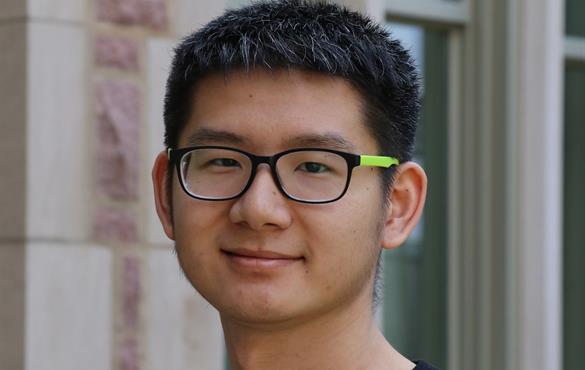Collaboration with Tsinghua leads to cellular mechanobiology discovery
In a collaboration with Tsinghua University, doctoral student Shumeng Jiang uncovered a series of interesting cell behaviors that were previously unknown

While engineers have gathered a lot of information about cells, they have not been able to tell the difference between how structural and material stiffnesses affect the behavior of a cell — until now.
Shumeng Jiang, a doctoral student in mechanical engineering in the McKelvey School of Engineering at Washington University in St. Louis, was part of a team that uncovered how previously unknown cell behaviors are controlled by material or structural stiffness, such as growth, motility, differentiation and gene expression.
The work was published in Nature Communications Aug. 2.
Jiang began the research with the team as a master's student at Tsinghua University in Beijing, a member of the McDonnell International Scholars Academy. The McDonnell Academy, a collaboration of 35 universities, including Washington University in St. Louis, supports graduate and professional degree students pursuing master's or doctoral degrees in disciplines including engineering, science, architecture and social work.
"Engineers have long known how to arrange materials into macroscale structures such as bridges so that the structural response of the bridge can be tuned almost independently of the properties of the materials used to make it," said Guy Genin, the Harold and Kathleen Faught Professor of Mechanical Engineering in the McKelvey School of Engineering and Jiang's doctoral adviser. "What Shumeng has invented is a way to do something similar at the level of material that surrounds a cell."
Genin is chief engineer for WashU's Center for Innovation Science & Technology and is the university's principal investigator for the National Science Foundation's Science and Technology Center for Engineering MechanoBiology. He is the McDonnell International Scholars Academy ambassador to Xi'an Jiaotong University and serves as Changjiang Professor of Life Sciences at that university. In 2014, he was named a Tsinghua Global Scholars Fellow, a program that links senior Tsinghua faculty with foreign collaborators through defined, peer-reviewed research proposals.
Jiang and the team, led by Yanan Du, associate professor of biomedical engineering at Tsinghua, studied the stiffness and structure of 3D porous scaffolds used to regenerate tissues, such as skin and bone. The stiffness can be divided into material stiffness and bulk stiffness because of the porous structure; material stiffness describes how the properties comprising an object behave at the microscopic level, and bulk stiffness refers to its overall rigidity.
They found that the macrophages, or large cells in the immune system that eat damaged or dead cells, have a dramatic response to the change in structure. Macrophages within smaller and softer pores in the scaffold showed pro-inflammatory characteristics, whereas larger and stiffer pores in the scaffold led to anti-inflammatory characteristics.
"When you can control these different mechanical properties separately, you can control the cell behavior when you use the scaffold to assist the tissue regeneration," Jiang said. "It is a brand-new strategy. You can add medicines to control the cell behavior traditionally, and you can also control the mechanical properties of the scaffold to further improve the regeneration now."
"Shumeng uncovered a series of interesting behaviors controlled by stiffness and structure of scaffolds that were not possible to understand before," Genin said. "This work is basic science that was previously inaccessible that is immediately translatable."
Jiang S, Lyu C, Zhao P, Li W, Kong W, Huang C, Genin G, Du Y. Cryoprotectant enables structural control of porous scaffolds for exploration of cellular mechanoresponsiveness in 3D. Nature Communications, Aug. 2, 2019. DOI: 10.1038/s41467-019-11397-1
This research was funded by the National Key R&D Program of China, the National Natural Science Foundation of China and Beijing Natural Science Foundation.




